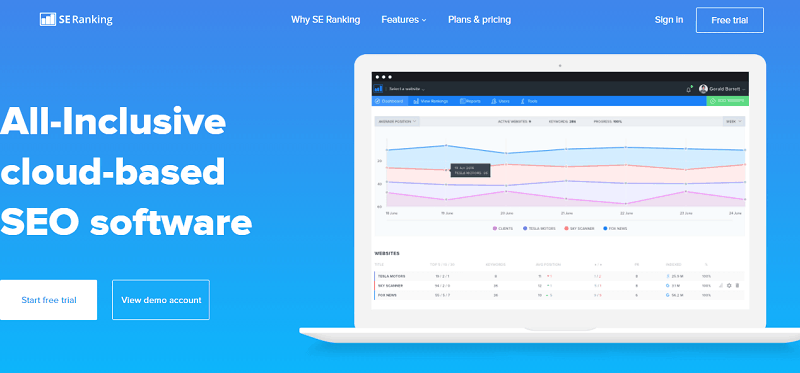In today’s fast-evolving digital marketing landscape, two strategies have gained significant traction for driving business growth: demand generation and account-based marketing (ABM). While both aim to attract and convert potential customers, they differ in approach, targeting, and execution. Understanding the differences between demand generation vs account-based marketing is essential for businesses looking to adopt the most effective strategy for their goals.
This article explores the key distinctions between demand generation and ABM, guiding U.S. advertisers on how to leverage these strategies to enhance their marketing efforts, especially in industries such as connected TV advertising, OTT advertising, and performance marketing.
Table of Contents
What is Demand Generation?
Demand generation is a broad, holistic marketing strategy designed to create awareness and interest in a company’s products or services. It encompasses various marketing tactics aimed at building a pipeline of potential customers through different stages of the buyer’s journey, from awareness to decision-making.
Key Features of Demand Generation
- Broad Audience Targeting: Demand generation campaigns are designed to reach a wide range of prospects, regardless of industry, company size, or specific account. The goal is to cast a wide net to generate leads and increase awareness of your offerings.
- Lead Nurturing: Once prospects enter the funnel, demand generation involves nurturing these leads through targeted content, email campaigns, webinars, and more to convert them into customers.
- Top-of-Funnel Focus: Much of demand generation activity happens at the top of the marketing funnel, where brand awareness and education are critical. Tactics include content marketing, social media advertising, and connected TV advertising.
Benefits of Demand Generation
- Scalability: Demand generation is designed to attract a large number of leads, making it highly scalable.
- Brand Awareness: It’s an excellent approach for companies looking to expand their reach and introduce their brand to a broader audience.
- Long-Term Engagement: This strategy allows for long-term nurturing, keeping prospects engaged through various stages of the buyer’s journey.

What is Account-Based Marketing (ABM)?
Account-based marketing (ABM) takes a different approach by focusing on highly targeted, personalized marketing strategies aimed at specific accounts or companies. Instead of casting a wide net, ABM concentrates marketing efforts on a defined set of high-value accounts that are most likely to convert.
Key Features of Account-Based Marketing
- Narrow, Specific Targeting: ABM is laser-focused on a small number of high-value accounts. Marketing efforts are personalized for each account, with custom content and tailored messaging that address specific business needs.
- Sales and Marketing Alignment: ABM requires close collaboration between sales and marketing teams to ensure consistent messaging and seamless customer experiences across all touchpoints.
- Deep Personalization: ABM campaigns involve highly tailored content, often designed for decision-makers within the targeted accounts. This might include personalized emails, account-specific landing pages, and even customized ads on channels like OTT or programmatic advertising.
Benefits of Account-Based Marketing
- Higher ROI: By focusing on high-value accounts, ABM tends to deliver a higher return on investment compared to broader strategies.
- Increased Efficiency: With ABM, marketers can allocate resources more effectively by targeting only the accounts that matter most.
- Personalized Approach: The deep personalization involved in ABM builds stronger relationships and trust with key decision-makers.
Demand Generation vs Account-Based Marketing: Key Differences
Now that we’ve outlined the basics of demand generation and ABM, let’s dive deeper into the key differences between demand generation vs account-based marketing:
1. Target Audience
- Demand Generation: Focuses on a broad audience, aiming to attract as many leads as possible. The approach is less about individual accounts and more about casting a wide net.
- Account-Based Marketing: Focuses on a specific set of high-value accounts. ABM targets companies or decision-makers that have already been identified as ideal clients.
2. Personalization
- Demand Generation: While demand gen involves some degree of personalization (such as tailored email campaigns), it’s often generalized to appeal to a broader audience.
- Account-Based Marketing: ABM takes personalization to the next level, offering highly customized content, personalized ads, and individualized outreach strategies.
3. Sales and Marketing Collaboration
- Demand Generation: In demand generation, the marketing team typically leads the efforts, creating broad content, nurturing leads, and generating interest before handing off qualified leads to sales.
- Account-Based Marketing: ABM requires close coordination between sales and marketing. The two teams must work together from the start to identify target accounts, create customized content, and engage decision-makers in a cohesive manner.
4. Measurement of Success
- Demand Generation: Success in demand generation is often measured by metrics such as website traffic, lead volume, and conversion rates. It’s a numbers game focused on scaling and filling the sales funnel.
- Account-Based Marketing: ABM measures success through more account-specific metrics, such as account engagement, meetings booked with key decision-makers, and revenue generated from targeted accounts.
5. Tactics and Channels
- Demand Generation: Common demand generation tactics include content marketing, search engine optimization (SEO), social media advertising, and connected TV advertising, among others. The focus is on generating awareness and attracting leads at the top of the funnel.
- Account-Based Marketing: ABM tactics are more tailored and personalized, such as account-specific emails, targeted programmatic ads, and even bespoke events for decision-makers within those accounts. Channels like OTT advertising or direct mail may also be employed to create personalized, high-impact campaigns.
The Role of Technology in Both Strategies
Both demand generation and ABM benefit from technology and data-driven marketing. Here’s how:
Demand Generation Tools
- Marketing Automation Platforms: These platforms, like HubSpot or Marketo, allow marketers to automate email campaigns, nurture leads, and track engagement across channels.
- Content Management Systems (CMS): Tools that enable content creation and distribution at scale are essential for successful demand generation campaigns.
ABM Tools
- ABM Platforms: Tools like Terminus or 6sense provide marketers with the ability to create and execute highly personalized campaigns for specific accounts.
- Customer Relationship Management (CRM) Systems: CRM systems, such as Salesforce, help align sales and marketing teams by providing valuable insights into key accounts and tracking interactions.
How Connected TV Advertising Fits In
Connected TV (CTV) advertising can play a vital role in both demand generation and ABM. For demand generation, CTV helps reach a broad audience by leveraging programmatic advertising to serve ads across various channels and platforms, increasing brand visibility and awareness.
In contrast, CTV is equally valuable in ABM strategies, where highly targeted ads can be served directly to decision-makers within specific accounts. With advanced targeting options, businesses can reach the exact audience that matters most, whether they are watching OTT content or traditional TV advertising formats.
Choosing the Right Strategy for Your Business
The choice between demand generation and ABM depends largely on your business goals, target audience, and resources. Here’s a quick guide to help you decide:
Choose Demand Generation If:
- You are looking to scale your business quickly by attracting a large volume of leads.
- Your primary goal is to build brand awareness and fill the top of the sales funnel.
- You are targeting a broad audience across various industries and account sizes.
Choose Account-Based Marketing If:
- You are focused on high-value accounts that represent the most revenue potential.
- Your marketing and sales teams can collaborate closely to personalize outreach efforts.
- You want to build deep, personalized relationships with decision-makers at specific companies.
Conclusion
In the world of digital marketing, both demand generation and account-based marketing offer distinct advantages. Understanding the key differences between demand generation vs account-based marketing allows advertisers to choose the right approach based on their goals. Whether you’re leveraging connected TV advertising for broad outreach or targeting specific accounts with tailored messaging, these strategies offer powerful tools for business growth in today’s competitive landscape.
























